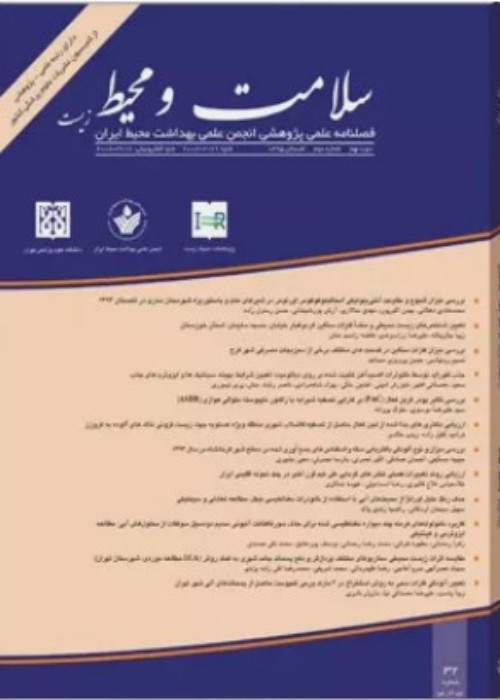Toxic elements (Fe, Pb, and Cu) contents in surface sediments and native aquatic plants (Typha Latifolia and Nasturtium microphyllum) tissues of Lar river: evaluation of biomonitoring and bioremediation capability
Monitoring and remediation of metal contaminants in aquatic ecosystems is of particular importance to estimate, control, and reduce the level of threats to alive creatures and humans. Therefore, this study was conducted to evaluate metal contamination of surface sediments and the ability to monitor and bioremediation of iron, lead, and copper by aerial and underground tissues of Typha Latifolia and Nasturtium microphyllum located along the aquatic ecosystem of the Lar River, Tehran, Iran in 2021.
In this descriptive study, after selecting four sampling sites, 48 plant samples and 12 sediment samples were collected. After preparation and acid digestion of the samples in the laboratory, the contents of the elements were determined using inductively coupled plasma-optical emission spectroscopy (ICP-OES). Also, pollution index (PI), pollution load index (PLI), bioconcentration coefficient (BCF), bioaccumulation (BAF), and translocation factor (TF) were calculated. Statistical analyses of the results were performed using SPSS statistical software.
The highest values of Fe, Pb, and Cu (mg/kg) in sediment samples were 11.8 ± 0.665, 0.915 ± 0.030, and 0.710 ± 0.026, respectively, and belonged to station 4; and in plant tissues 11.4 ± 1.25, 0.578 ± 0.180, and 0.298 ± 0.095, respectively, and were belonged to the roots of T. Latifolia. The PI values showed that the pollution of Fe, Pb, and Cu was "low" and the average PI values for the elements followed the descending order of Pb > Cu > Fe. The average values of PLI also vary from 0.003 to 0.006, indicating the quality conditions of "no pollution" in all the studied stations. On the other hand, T. Latifolia had a BCF > 1 and TF < 1 for Fe.
Based on the results obtained, it can be concluded that T. Latifolia is a suitable species for stabilizing Fe in sediments and could be used to monitor and remediate potentially toxic elements from polluted aquatic ecosystems.
- حق عضویت دریافتی صرف حمایت از نشریات عضو و نگهداری، تکمیل و توسعه مگیران میشود.
- پرداخت حق اشتراک و دانلود مقالات اجازه بازنشر آن در سایر رسانههای چاپی و دیجیتال را به کاربر نمیدهد.





